The Enigmatic Pacific Octopus: A Deep Dive into the World of a Marine Mastermind
The Pacific Octopus Enteroctopus dofleini is a captivating creature that embodies intelligence, adaptability, and sheer biological wonder. Found along the Pacific coast of North America, from Alaska to California, this cephalopod is not merely an inhabitant of the ocean; it’s a testament to the incredible diversity of life on Earth. This guide explores every facet of the Pacific Octopus, from its natural history and behavior to its role in the ecosystem and interactions with humans.
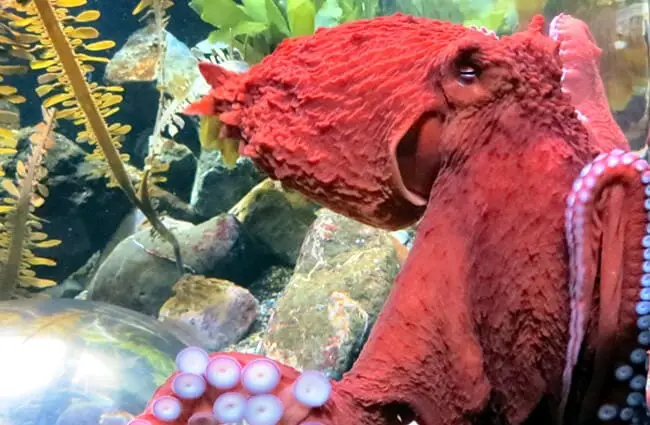
Habitat and Distribution
The Pacific Octopus thrives in the cool, temperate waters of the North Pacific. They prefer rocky intertidal and subtidal zones, often making dens within crevices, caves, or among kelp forests. These dens are not permanent homes; rather, they serve as temporary shelters and nurseries. They can be found at depths ranging from shallow tide pools to over 750 feet, although they are most commonly encountered in shallower waters. Their geographic range extends from the Aleutian Islands in Alaska down the coast to central California. A crucial aspect of their habitat selection is access to food and protection from predators. They are notably tolerant of varying salinities, allowing them to venture into estuaries and even freshwater areas for short periods.
Evolutionary History
The story of the Pacific Octopus begins in the Cambrian period, over 500 million years ago, with the earliest ancestors of cephalopods. These ancient creatures were likely simple, shelled organisms. Over millions of years, cephalopods underwent a remarkable transformation, developing advanced features like jet propulsion, complex nervous systems, and eventually the ability to camouflage. The Pacific Octopus, as a member of the Octopodidae family, represents a highly evolved lineage within this group. Their ancestors gradually lost their internal shells, becoming more flexible and maneuverable. The development of suckers, highly sensitive and manipulative appendages, was another crucial step in their evolution, allowing them to grasp prey and navigate their environment with precision. Genetic studies reveal a close relationship with other octopus species, suggesting a relatively recent diversification from common ancestors.
Diet and Hunting Strategies
The Pacific Octopus is a voracious predator with a diverse diet. They primarily feed on crustaceans like crabs, shrimp, and lobsters, but also consume mollusks, fish, and even other octopuses. Their hunting strategies are remarkably adaptable. They employ several techniques, including ambush predation, where they lie in wait, camouflaged against the seafloor, and strike quickly when prey approaches. They also actively forage, exploring crevices and overturning rocks in search of food. A unique hunting method involves using their suckers to drill into the shells of crabs and clams, injecting a paralyzing saliva before consuming the prey. Their beak-like mouth is incredibly strong, capable of cracking open even the toughest shells. The amount of food an octopus consumes is staggering; they can eat up to one-third of their body weight in a single day.
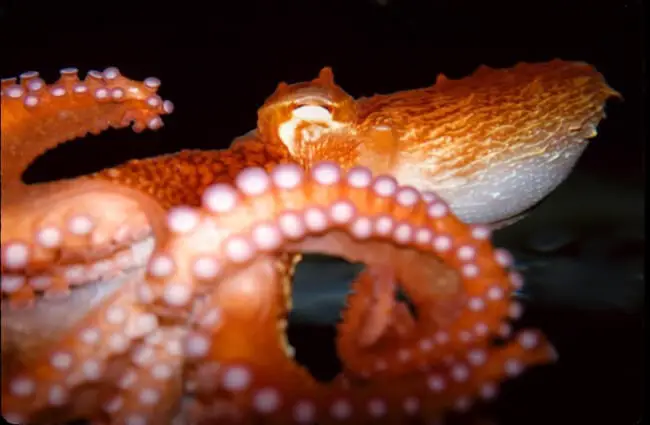
Reproduction and Life Cycle
The Pacific Octopus has a relatively short lifespan, typically living only 3 to 5 years. Their reproductive cycle is unique and dramatic. Males engage in elaborate courtship displays, changing color and pattern to attract females. Mating involves the transfer of spermatophores—packets of sperm—to the female. After mating, the male’s lifespan drastically declines, and he typically dies within a few months. Females, however, invest a significant amount of energy into caring for their eggs. They lay a cluster of 20,000 to 100,000 eggs, attaching them to a sheltered surface within their den. The female tirelessly guards the eggs, cleaning them and providing a constant flow of oxygenated water. During this period, she does not eat and gradually weakens. After the eggs hatch, the female also dies, completing the cycle of life. The newly hatched octopuses are tiny planktonic creatures, drifting in the water column until they develop into juvenile octopuses and settle on the seafloor.
Ecological Role and Interactions
The Pacific Octopus plays a crucial role in the marine ecosystem. As a top predator, it helps regulate populations of its prey species. It is also an important food source for larger predators, including seals, sea lions, sharks, and seabirds. Octopuses contribute to nutrient cycling through their feeding and waste products. They also modify their environment by creating dens, which provide shelter for other marine organisms. Interactions with other species can be complex. They sometimes engage in cooperative hunting with fish, and they have been observed using tools, such as coconut shells, for protection and shelter. They are also known to exhibit complex social behaviors, including communication through color changes and body postures.
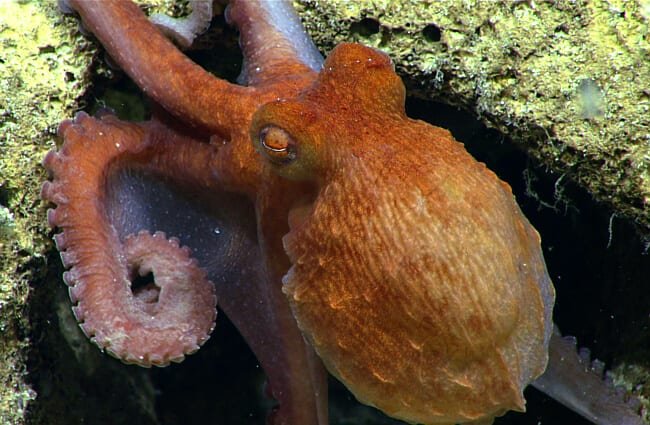
Human Interactions and Cultural Significance
Historically, the Pacific Octopus has been an important food source for Indigenous peoples along the Pacific coast of North America. It continues to be harvested for consumption and is featured in traditional stories and art. In recent times, the octopus has captured the public’s imagination due to its remarkable intelligence and unique abilities. It has become a popular subject of scientific research and has been featured in documentaries and books. However, human activities also pose threats to octopus populations, including overfishing, habitat destruction, and pollution. Sustainable fishing practices and conservation efforts are essential to ensure the long-term survival of these magnificent creatures.
Encountering an Octopus in the Wild
If you are fortunate enough to encounter a Pacific Octopus in the wild, observe it from a respectful distance. Do not attempt to touch or disturb it. Octopuses are shy and easily stressed. Avoid shining bright lights on them. If you are diving or snorkeling, maintain neutral buoyancy and avoid kicking up sediment. Report any sightings to local marine research organizations. Remember that octopuses are wild animals and should be treated with respect.
Caring for Pacific Octopuses in Captivity
Caring for Pacific Octopuses in captivity is a demanding task that requires specialized knowledge and facilities. Octopuses are highly intelligent and require a stimulating environment with plenty of enrichment. Tanks should be large and complex, with plenty of hiding places, climbing structures, and interactive toys. Water quality must be meticulously maintained. Octopuses are escape artists, so tanks must be completely secure. They require a varied diet of fresh seafood. Regular health checks are essential. It’s crucial to provide opportunities for problem-solving and exploration to prevent boredom and stress. Zookeepers should also be aware of the octopus’s natural camouflage abilities and be prepared for it to blend seamlessly into its surroundings.

Fascinating Facts
- Camouflage Masters: Pacific Octopuses can change their skin color and texture in a matter of seconds to blend in with their surroundings.
- Three Hearts: They have three hearts: two pump blood through the gills, and one circulates blood to the rest of the body.
- Blue Blood: Their blood is blue due to the presence of hemocyanin, a copper-based protein.
- Jet Propulsion: They can move quickly through the water by expelling water through a siphon.
- Regeneration: They can regenerate lost limbs.
- Problem Solvers: They are incredibly intelligent and can solve complex puzzles.
- Tool Use: They have been observed using tools, such as coconut shells, for shelter and protection.
- Escape Artists: They are notorious for escaping from tanks and enclosures.
- Venomous: They are venomous, using their venom to paralyze prey.

The Pacific Octopus remains a captivating subject for scientists and nature enthusiasts alike. Its intelligence, adaptability, and unique biology make it a true marvel of the marine world. Continued research and conservation efforts are crucial to ensure that these remarkable creatures thrive for generations to come.


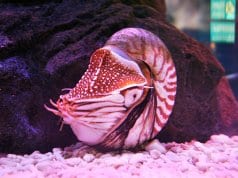
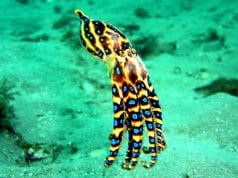
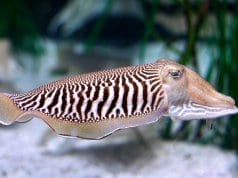

![Red Angus Closeup of a beautiful Red Angus cowPhoto by: U.S. Department of Agriculture [pubic domain]https://creativecommons.org/licenses/by/2.0/](https://animals.net/wp-content/uploads/2020/03/Red-Angus-4-100x75.jpg)

